
Each species, big or small, has a part to play.
© Eva Boynton
Why Study Abroad Sticks Like Glue
My t-shirt was soaked in sweat from heat and humidity. Diverse shades of green were my landscape and horizon. Howling monkeys and buzzing cicada bugs echoed in the distance.
The Amazon rainforest was unlike any classroom I had ever known. What was once a distant place, the subject of textbooks, now came to life in accentuated brightness and flavor.
It became my home for a winter semester. And, as it changed the way I understood our interdependent and connected world, it answered the question, “Why study abroad?”

Wide rivers of the Peruvian rainforest not only provide a home to a variety of plants and animals,
but also serve as a main mode of travel for locals and visitors.
© Eva Boynton
Into the Peruvian Rainforest
Reaching Manú National Park, a UNESCO World Heritage Site, is not a simple task.

Hugging Bolivia, Puerto Maldonado
lies on Río Madre de Dios.
- We arrived by plane in Puerto Maldonado, east of Cusco and the Andes.
- After driving to Puerto Carlos, we took a boat across the Inambari River.
- Then we drove to Boca Colorado and traveled by boat about six hours up the Madre de Dios River to Manú River that meanders through the park.
Listening to the motor roar in his ear for all six hours, a local from Puerto Maldonado steered the boat, dodging debris to take our group of 13 students and two professors into our classroom.
The dynamic route offered direct experience with the geography and landscape that set the stage for later connections.

Watching for river otters, pink dolphins and
other wildlife along the river
© Rydell Welch
Biodiversity in Our Backyard
On the first day in the national reserve, we stepped into our new backyard with local researchers and guides René Escudero and Rufo Bustamante. We tiptoed on tree roots to avoid rain-flooded trails, ducked under leaves as big as my torso, and maneuvered around intricate spiderwebs seen at the last minute.

Buttress roots find nutrients in the soil and stabilize 200-foot trees.
© Eva Boynton
The rainforest was, in one word, alive! To put things into perspective, rainforests cover only 2% of Earth’s surface. Found within that 2% is half of all Earth’s plants and animals.
Manú National Park contains some of the greatest biodiversity on Earth. Consider the butterfly—Europe may have an impressive 321 species, but Manú National Park supports 1,300 species in an area 3% the size of France.

The canopy is home to 80–90% of the animals in the rainforest.
© Eva Boynton
From Big to Small, Everything Counts
With each step of our explorations, we uncovered secrets of the rainforest, including many interdependent relationships.
- One myrmecophyte (plant living in a mutualistic relationship with an ant colony) offers leaf pouches, called domatias, that serve as nests for particular ant species.
- The ants, in turn, offer the plant an army for protection against other insects that might feed on it.

Ants trade protection for shelter.
© Eva Boynton
Howler monkeys, awaking us each morning with bellowing sounds, seem like independent animals. But they, too, rely on other organisms within this rich world of biodiversity:
- The monkeys depend on leaves from the canopy for food.
- Trees in the canopy grow by extracting minerals from the soil with the help of fungi on their roots.
- The fungi rely on beetles that decompose litter on the forest floor, including the excrement of howler monkeys.

In the rainforest, when you look up, a howler monkey
munching on leaves may be looking back.
© Eva Boynton
Everything is connected in a cycle—monkey, tree, fungi, beetle, and back to monkey. As big as towering trees or as small as some of the 3,600 species of spiders, the organisms in the rainforest are connected by a web of interdependent relationships.
More Connections Under the Canopy
Study abroad plunged me into the vastness of the Peruvian Amazon and opened my eyes to countless scientific connections.
But there were personal connections, too, the kind that made me say “Oh, I see!”
I found that I learned best when lessons were non-linear and sprang from discovery. Study abroad is immersive (so different from textbook lessons). The direct hands-on experience that it provides transformed the Amazonian world into my greatest classroom.

Hands-on interaction in the Amazon meant letting your senses make the discoveries:
listening, smelling, tasting, and touching.
© Eva Boynton
Study abroad, also challenged me to become familiar with something unknown and different. I saw, just as the organisms in the Amazon rainforest depended on each other, that I, too, fit into an interdependent world larger than my neighborhood. I made the connections, and my way of seeing changed in the process.
When people make personal discoveries like learning style, face challenges, and find their unique roles, they connect the dots of the diverse network that is our world. And that’s why a study abroad experience sticks to people like glue and stays with them for life.

The wall of forest signifies a moving, grooving, buzzing home to the world’s most diverse habitat.
© Eva Boynton
For more information on Amazon biodiversity check out Discovering Peru.
To learn about conservation of Peru’s rainforest visit Amazon Conservation Association.
Comment on this post below, or inspire insight with your own OIC Moment here.

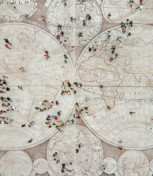



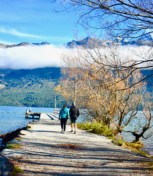
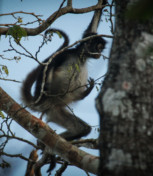


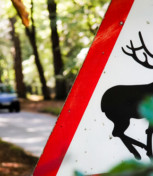
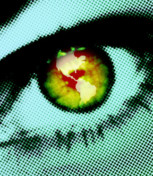










Wow, Eva, you just blow my mind. You have so many “outside the box” experiences. I am so proud of you. I remember when you went down there and am so glad to be hearing about your adventure.
Suki,
Thank you for reading and commenting. The experiences in different environments always prove to inspire new understanding for me. I have been so fortunate in my travels and I look forward to the next one!
Cheers,
Eva